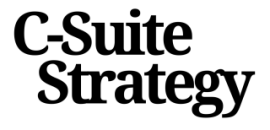
The Evolving Role of the COO
The Chief Operating Officer (COO) isn’t just the second-in-command in organizations; their role has morphed beyond traditional boundaries. As businesses shift gears in real-time, the COO stands at the helm of this operational orchestration. According to a study by Harvard Business Review, over two-thirds of COOs find themselves juggling strategic and operational roles, which highlights the need for a comprehensive understanding of their responsibilities.
The Operational Symphony
Juggling the intricacies of operations while aligning them with the company’s ambitions requires more than just managerial prowess. It's a symphony where every part must sync up with the larger strategic goals set by the organization. For COOs, the ability to blend operational efficiency with strategic foresight defines success. Not only must they ensure day-to-day functions are running smoothly, but they've also got to keep an eye on the bigger picture. This means understanding shifts in market demands, recognizing opportunities, and mitigating risks. For more on this, consider visiting the study on COO roles in modern business, which offers deeper insights into their evolving landscape.
In this balancing act, the modern COO also shoulders the mantle of leadership during transitions. When business environments change, it’s these leaders who must adapt operations promptly, ensuring stability while driving growth. This dynamic role demands a clear-headed and adaptable approach, equipped to tackle hurdles with a strategic mindset.
Certainly, successful COOs must foster a data-informed culture, empower teams for collaborative innovation, and build resilience within their organizations—all topics we’ll explore further along in this series.
Aligning Strategy with Operations
Connecting Strategy and Operations
Every Chief Operating Officer knows that aligning strategy with operations is like finding the rhythm in a dance. It’s about making sure every move is in sync, ensuring the company’s goals are not just lofty ideas but actionable plans. The COO's role is to bridge the gap between vision and reality, turning strategic plans into operational success.
Consider the case of a manufacturing company that wanted to reduce its carbon footprint. The COO worked closely with the strategy team to integrate sustainability into their operations. By switching to renewable energy sources and optimizing supply chains, they not only met their environmental goals but also reduced costs. This is a prime example of how aligning strategy with operations can lead to tangible benefits.
Practical Tips for COOs
- Communicate Clearly: Ensure that everyone in the organization understands the strategic goals and how their roles contribute to achieving them. Clear communication prevents misunderstandings and aligns efforts.
- Focus on Metrics: Use data to track progress and make informed decisions. Metrics can highlight areas that need adjustment and celebrate successes.
- Be Agile: The business environment is constantly changing. Be prepared to adapt strategies and operations as needed to stay competitive.
For more insights on mastering the art of operations, check out this resource.
Balancing Act
Balancing strategy and operations requires a COO to wear many hats. It involves understanding the big picture while also diving into the details. This dual focus ensures that strategic goals are not only set but met, keeping the organization on track for success.
In the end, a COO's ability to align strategy with operations can be the difference between a company that thrives and one that merely survives. It's about turning plans into action and ideas into results.
Leadership in Times of Change
Leading Through Change
Being a COO means being in the thick of things, especially when change is the order of the day. That's when your leadership gets tested. Ever heard of the saying, "When the going gets tough, the tough get going"? That's exactly how it feels. It's more than steering the ship; it's about inspiring your crew to weather the storm with you. Change isn't something you can check off a list; it's an ongoing journey. You can't stop shifts in the market or unexpected challenges, but you can decide how to respond. Let me share a little wisdom from a manufacturing COO I had the pleasure of meeting. This COO faced an industrial disruption that put the entire production line to the test. Instead of freezing, the COO took charge, ensuring every team was aligned and informed. This decisive leadership reduced downtime and boosted morale. She didn't hide the challenges but turned them into collective goals. Her team didn’t just survive; they thrived.Keeping the Team Steady
True leadership is about supporting your people. Employees look to the COO for stability and direction, especially when things are bumpy. It’s crucial to maintain open lines of communication – addressing concerns openly while keeping everyone focused on a shared vision helps ease anxieties. Where do you find the balance between authority and approachability? The secret is in empathy and transparency. Relating to your team's experiences and showing you’re in it together creates trust and loyalty. Strategic yet approachable leadership in changing times can really set a COO apart. For further insights into effective business strategy and leadership, check out the blog on CHRO Insights for Effective Business Strategy and Leadership.Data-Driven Decision Making
Trust the Numbers in Decision Making
Data tells a story, and a COO's gift is translating that story into actions. It’s about trusting the numbers and weaving them into the fabric of daily decisions. A COO is often the bridge between raw data and actionable insights. In both {{business strategy}} and operations, data serves as a beacon of clarity. Harness these insights to reduce risk and improve outcomes, driving profitability and efficiency. When the stakes are high, your leadership decisions must be data-driven for robustness and precision.Practical Implementation of Data-Driven Strategies
Every COO should have an arsenal of tools to analyze data. However, beyond tools, it’s the practical implementation that makes the difference. Use real-time analytics to identify {{management trends}} and operational gaps. For example, during a technological upgrade, your team can use data to see past patterns, anticipate disruptions, and forecast future gains. A hands-on approach with data empowers you to lead through {{leadership challenges}} and keeps you ahead of issues before they snowball.Listening to the Unseen Signals
COOs, pay attention to not just the obvious numbers but also the subtle signals. These might be market shifts or changes in customer feedback. A deeper dive uncovers hidden opportunities and potential threats. Building agility into your decision-making process is key. This not only fortifies your planning but also ensures you remain nimble and responsive. Sometimes the critical insights lie in patterns you hadn’t considered.Unexpected Uses of Data
Consider automatic tracking of employee performance metrics to identify training needs promptly for smoother {{operational management}}. Likewise, evaluating sales data can reveal which products need more promotional support or which markets to target next. These insights then inform resource allocation and strategic priorities. It's all about making the data work for you in practical, sometimes unconventional ways. Remember, as COOs, finding new ways to harness data effectively can transform how you lead and scale your business. Trust the numbers, but also trust your instincts to leverage what those numbers say. [Source: McKinsey & Company, "The cornerstones of large-scale technology transformation"]Building a Resilient Organization
Strengthening the Backbone of Your Business
Building a resilient organization is like fortifying a castle. It requires a solid foundation, flexible structures, and a team ready to face any challenge. As a COO, your role is pivotal in ensuring that your company can withstand both internal and external pressures. It's not just about surviving; it's about thriving under pressure.
Resilience starts with a culture that embraces adaptability. Encourage your team to be open to change and to see challenges as opportunities for growth. This mindset shift can transform the way your organization handles unexpected hurdles. Take, for instance, the 2008 financial crisis. Companies that adapted quickly and embraced new strategies emerged stronger. Those who clung to old ways often struggled.
Empowering Your Team
Empowerment is a key ingredient in building resilience. When employees feel valued and trusted, they're more likely to take initiative and contribute to the organization's success. Share decision-making responsibilities and provide them with the resources they need to excel. This not only boosts morale but also creates a more agile workforce ready to tackle whatever comes their way.
Consider the approach taken by a leading tech firm during a major product recall. Instead of panicking, the COO empowered teams to find solutions, leading to innovative fixes and a stronger product line. This proactive approach turned a potential disaster into a triumph.
Fostering a Culture of Continuous Learning
Continuous learning is the lifeline of resilience. Encourage your team to seek out new skills and knowledge. This doesn't just mean formal training sessions; it can be as simple as promoting a culture where curiosity is rewarded. When employees are encouraged to learn and grow, they become more adaptable and better equipped to handle changes.
One effective method is to implement regular "innovation days" where teams can experiment with new ideas without the pressure of immediate results. This not only sparks creativity but also helps in identifying potential areas of improvement.
Building Strong Partnerships
Resilience isn't built in isolation. Forge strong partnerships with suppliers, customers, and even competitors. These relationships can provide support and resources during challenging times. A well-connected COO can leverage these networks to ensure the organization remains steady, even when the going gets tough.
Think of a retail giant that faced supply chain disruptions. By maintaining strong relationships with suppliers, they were able to quickly find alternative solutions, minimizing impact and keeping operations running smoothly.
In conclusion, a resilient organization is one that can adapt, empower, learn, and connect. As a COO, your leadership in fostering these qualities can make all the difference in steering your company through both calm and stormy seas.














